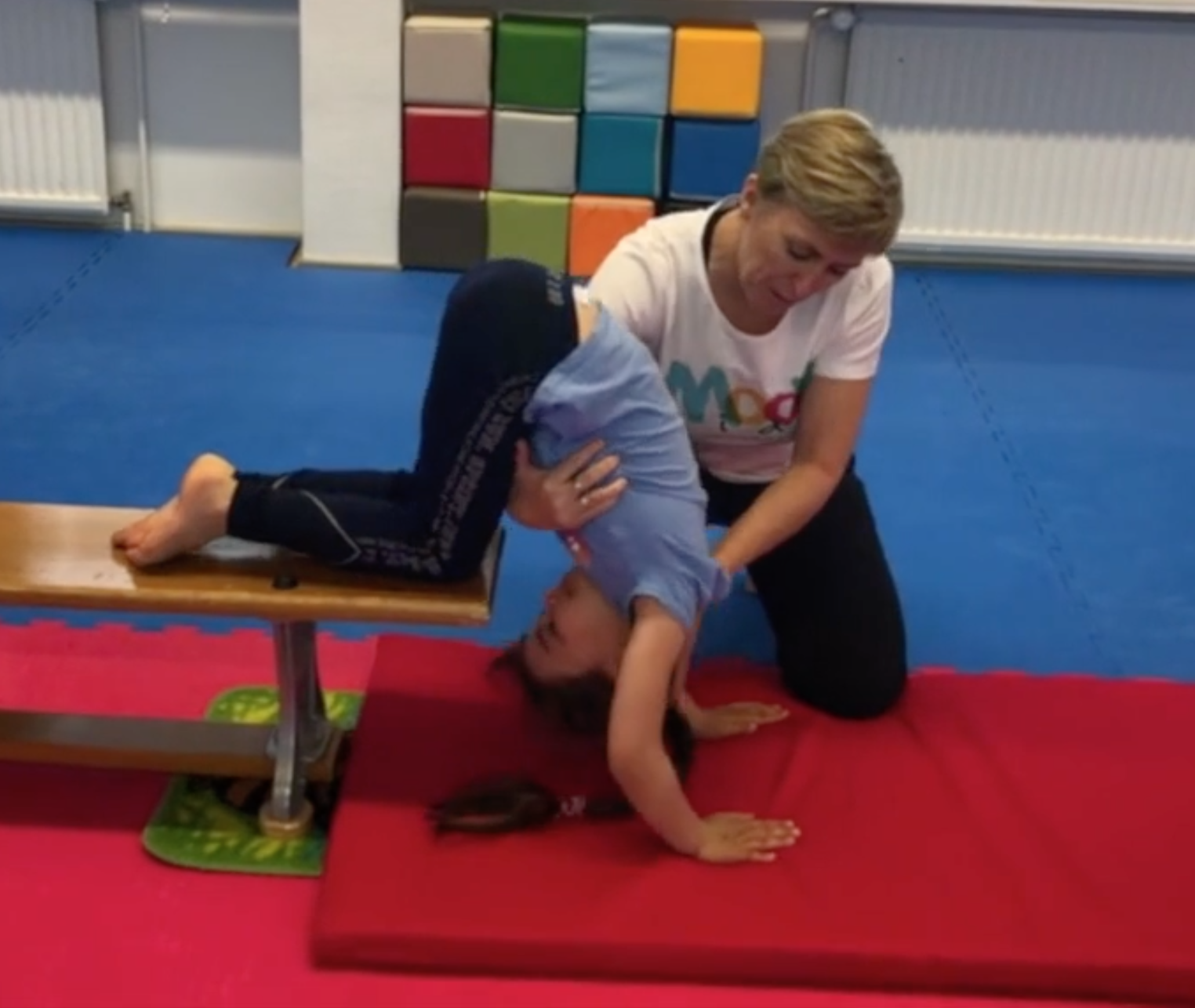
Teach a forward roll safely.
Being able to do a forward roll is a milestone children love to accomplish. Rolling is a natural body movement and supports the development of axial stability, which is one of the three balance areas that children need to develop. Once a child masters the art of tucking in the head well, forward rolls come easily. And so many more advanced activities can stem from a simple forward roll.
Five benefits of learning to do a forward roll:
1. Core Strength
By rolling over repeatedly and by sitting up after rolling over the muscles on both sides of the body as well as the tummy muscles develop, resulting in a child having good core strength. Without core strength children tend to struggle in many areas, including the physical ability to sit still in a chair when at school.
2. Eye Tracking
Rollovers provide that upside-down feeling that is so important for the development of eye tracking. In later years this supports reading skills. Without good eye-tracking ability, children may struggle to follow the lines on a page when they read the words from left to right.
3. Bilateral Coordination
In order to accomplish a forward roll, both sides of the body need to work in unison and with the same force, resulting in the body rolling over the top and not falling to one side. When this happens, it is a sure sign that more strength is being used on one side than the other.
Bilateral coordination is when both sides of the body are working together to accomplish a task. Therefore a rollover is a perfect and valuable way to develop this skill. It is important for a child to plant both hands firmly on the ground before beginning to roll. You can help guide the body over by holding the child at the hips.
4. Body Awareness & Control
Forward rolls require motor planning and body awareness. This is the ability to carry out the physical steps in the correct order to achieve the task: knowing where and how to place the hands, how to use the feet to push from the floor and how to keep the balanced body control while in motion and how to successfully finish by sitting up. Both the brain and the body work hard to achieve this.
5. Physical self-confidence
This develops through repetition of activities and from the awareness of having succeeded at doing a skill that takes some determination and perseverance to achieve. Rollovers should be encouraged, guided and praised by all who witness this feat being accomplished. Learning to do a challenging skill without help is a big event for a young child. At every opportunity children should be encouraged to do rollovers in a fun way, with your physical support if needed.
Rolling Ideas
Roll down a grassy slope.
Roll from a kneeling position from a sofa or bed onto a carpet or rug. Use a cushion if needed.
Roll on a trampoline.
Roll on a low mattress.
Participating in a gym class provides many opportunities for rolling as well.
Forward Roll Safety
For all the above suggestions, safety must be taken into consideration. Help your child learn when and where it is safe to do rollovers.
- Clear the area of obstacles or sharp objects.
- Take into consideration the surface and that will be rolled on: Is it soft enough? Will it slip?
- Ensure that your child understands how to tuck the head in well, so that the chin touches the chest.
When to Start Rolling
Children can start rolling over at 7 or 8 months guided by an adult.
The sooner they get used to that upside-down feeling, the more comfortable they will be to explore other fun tumbling activities. From a young age children should regularly participate in rough-and-tumble play with a parent where they can be tossed, tickled and rolled about in a joyful way. This is all healthy fun that benefits a child in many areas, not only physically.
Please watch my video so you can see exactly how to guide and support a child with learning to do a forward roll and please do keep on rolling with your children.
![]()




